DESCRIPTION:
Barn Owl is a medium sized owl, with long wings and distinctive head.
This owl has golden buff upperparts, variably spotted with light grey and finely streaked, mottled and dotted dark. The rounded wings and the short tail are white or light brown, with downy plumage.
Underparts are greyish white with pale buff on the breast sides, or fine spots on breast and flanks. The long legs are densely feathered, down to the grey toes.
Barn Owl has a middle claw covered in scales on the inner edge, similar to the comb’s teeth, used to preen head and neck feathers and the bristles at the bill base, in order to keep them clean.
The head is large, with white heart-shaped facial disc, bordered with brown. It lacks ear tufts. Unlike many owls, eyes are dark. Frontal area is pure white. The bill is hooked and pale.
Female is larger than male.
The chicks are covered with white down for six days, gradually replaced by buff-coloured down.
The juvenile are similar to adults when the down is lost.
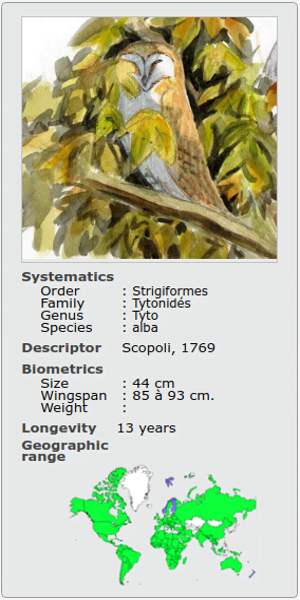
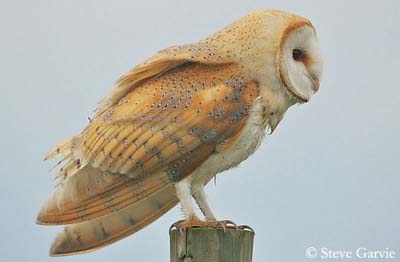
HABITAT:
Barn Owl frequents a great variety of habitats according to the food resources, seasons and competition with other predators.
We can find it in open country, cultivated areas with scattered trees, scrubs and hedgerows, around the towns and in villages, isolated buildings for nesting and roosting, and also in open marshes, mudflats ricefields, cliffs and rocky coasts in some part of the range.
It hunts along desert edges and canyons.
Barn Owl is usually found in lowlands, but in some areas, it can be seen up to 4000 metres of elevation.
RANGE:
Barn Owl lives in the Americas, Europe, Africa, Arabia, India, South-eastern Asia and Australia.
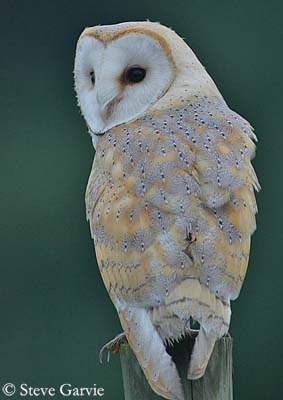
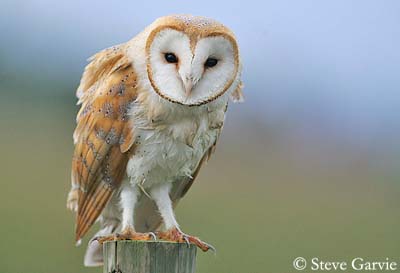
BEHAVIOUR:
Barn Owl feeds mainly on rodents, and mostly at night. It sweeps across the fields on silent flight, and when the prey is localized, it catches it with its long claws. It swallows the entire prey, bones, skull and all. It rejects pellets including the indigestible parts, at roost or near the nest.
Barn Owl uses its acute hearing to locate the prey in darkness. Each ear may hear different sounds, allowing localising the rodent, without even seeing it. It may locate rodents making little noise in the grass, while is fluttering above the ground.
Sounds are collected and brought to the ears by the facial disc, as a dish antenna. Their downy feathers allow them to be silent while they fly over fields, at about 1, 5 to 4, 5 metres above the ground.
Barn Owl is solitary or seen in pair. It is a nocturnal bird which roosts in tree cavities during the day. It may also choose crevices, riverbanks, nest- boxes or man-made structures. It is sedentary, but some northern birds migrate southwards in winter, and juveniles perform post-breeding dispersions.
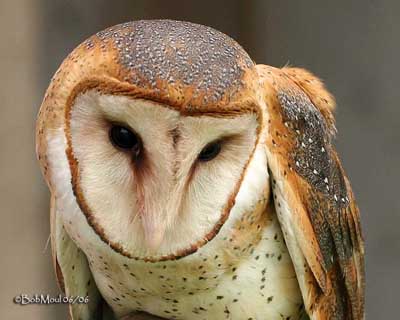
To defend territory and nest against predators, the Barn Owl spreads its wings and tilts them towards the intruder. Then, it sways the head back and forth. While it performs this display, it utters hisses and gives bill snaps, with squinted eyes. If the intruder insists, it falls on it and strikes with its feet.
Barn Owls are monogamous, with permanent pair bonds. Courtship displays include flights by male accompanied by calls, and chasing female. During these chases, both adults screech. Male may perform “moth flights” in front of female, hovering with dangling feet for several seconds. Both birds crouch down in front of each other, before copulation. Copulation occurs during the nest search, and continues decreasing during incubation and chick rearing.
FLIGHT:
Barn Owl has buoyant flight, with steady flapping, but it is wavering and also jerky as its body rises with each wing beat. Legs are often dangled in flight. Barn Owl flutters above the ground, searching for prey. It has silent flight.
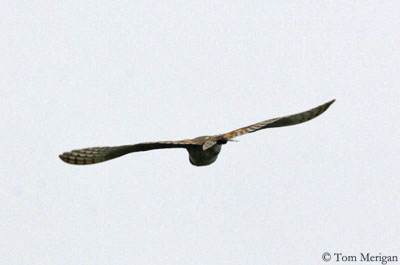
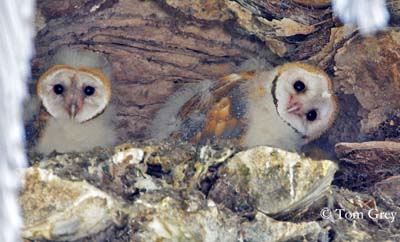
REPRODUCTION:
Barn Owl nests in cavities, natural cavities such as trees or in rock crevices, in nest-boxes, or in man-made structures. It may use an old nest, occupied for decades.
The nest is lined with bits of pellets, by female.
She lays 4 to 7 eggs, one egg every 2 to 3 days (sometimes up to 18 eggs). Incubation lasts about 29 to 34 days, by female, fed by the male. The chicks hatch altricial. The female broods and feed them during about 25 days. The male brings food at nest, but the female alone feeds the chicks. She tears the food into small pieces.
Both parents clean the nest.
The youngs fledge at 50 to 70 days of age, performing their first flight. They return to the nest to roost, for 7 to 8 weeks more. They become independent at about 3 to 5 weeks after begin flying. They reach their sexual maturity at one year.
This species produces one or two broods per year, sometimes three in the southern parts of its range.
DIET:
Barn Owl feeds mainly on rodents such as voles, mice, shrews and rats. They also eat small birds and large insects.
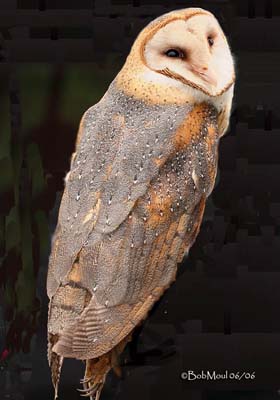
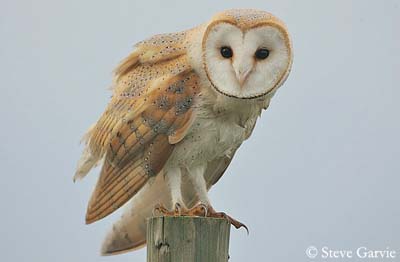
PROTECTION / THREATS / STATUS:
Barn Owls often die during the first few months of their life, for starvation, collisions, with fences, vehicles and buildings. They are killed by predators, such as Great Horned Owl, and other Strigiformes.
Most of adults do not live more than two years. They have also ground predators, such as skunks, opossum, foxes and snakes.
Populations are maintained by large broods, and having more than one brood per year.
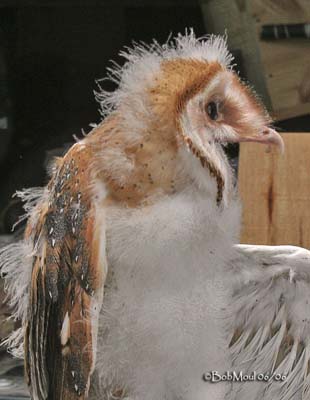
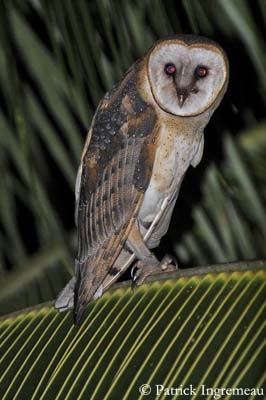
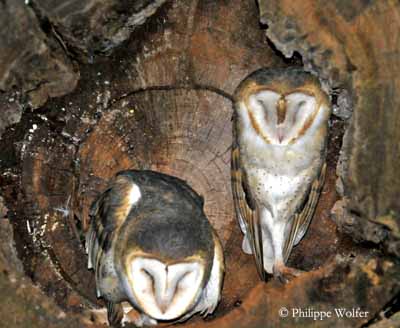
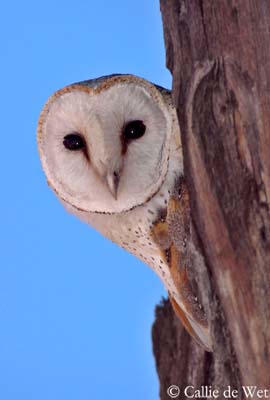
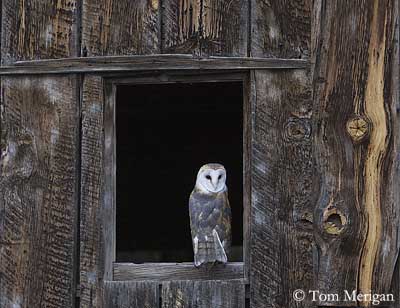
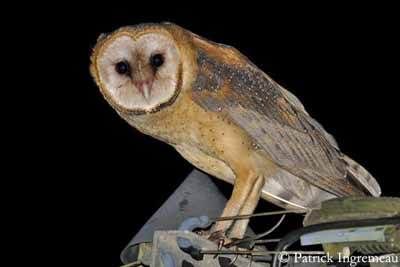
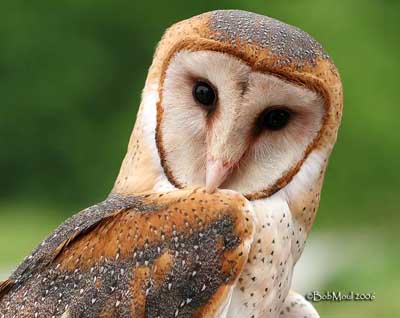
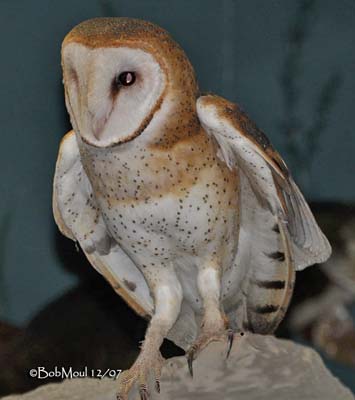
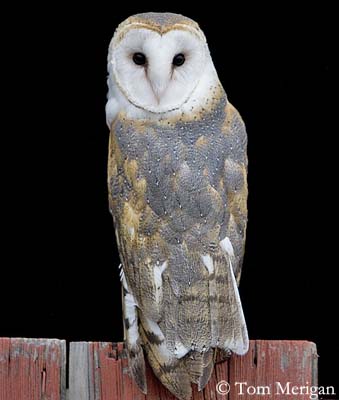
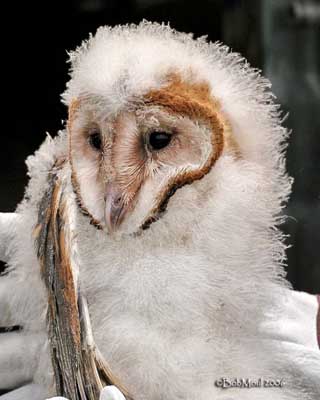
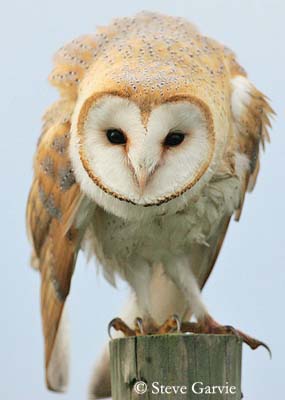
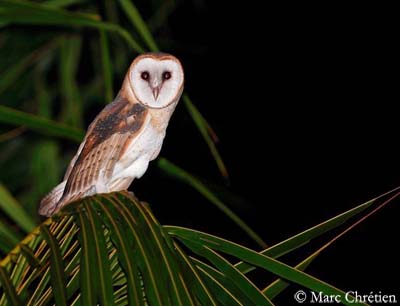
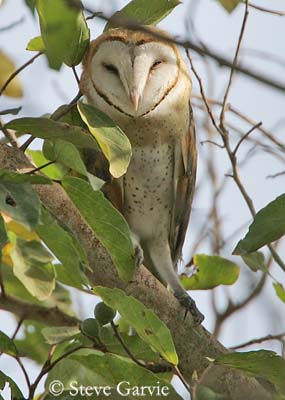
Sources:
HANDBOOK OF THE BIRDS OF THE WORLD Vol 5 by Josep del Hoyo-Andrew Elliott-Jordi Sargatal – Lynx Edicions – ISBN: 8487334253
THE HANDBOOK OF BIRD IDENTIFICATION FOR EUROPE AND THE WESTERN PALEARCTIC by Mark Beaman, Steve Madge – C.Helm – ISBN: 0713639601
Owls and Owling in Southern Africa by Warwick Tarboton and Rudy Erasmus – Tracey Hawthorne – ISBN: 1868721043
BIRDS OF THE GAMBIA AND SENEGAL by Clive Barlow and Tim Wacher – Helm Field guides – ISBN: 0713675497
A GUIDE TO THE BIRDS OF MEXICO AND NORTHERN CENTRAL AMERICA by Steve N. G. Howell, Sophie Webb – Oxford University Press – ISBN: 0198540124
A GUIDE TO THE BIRDS OF COLOMBIA by Steven L. Hilty and William L. Brown – Princeton University Press – ISBN 069108372X
PORTRAITS D’OISEAUX GUYANAIS – Groupe d’étude et de protection des oiseaux en Guyane (GEPOG) – Ibis rouge éditions – ISBN: 2844501842
Animal Diversity Web (University of Michigan Museum of Zoology)





























































































































































































































































































































































